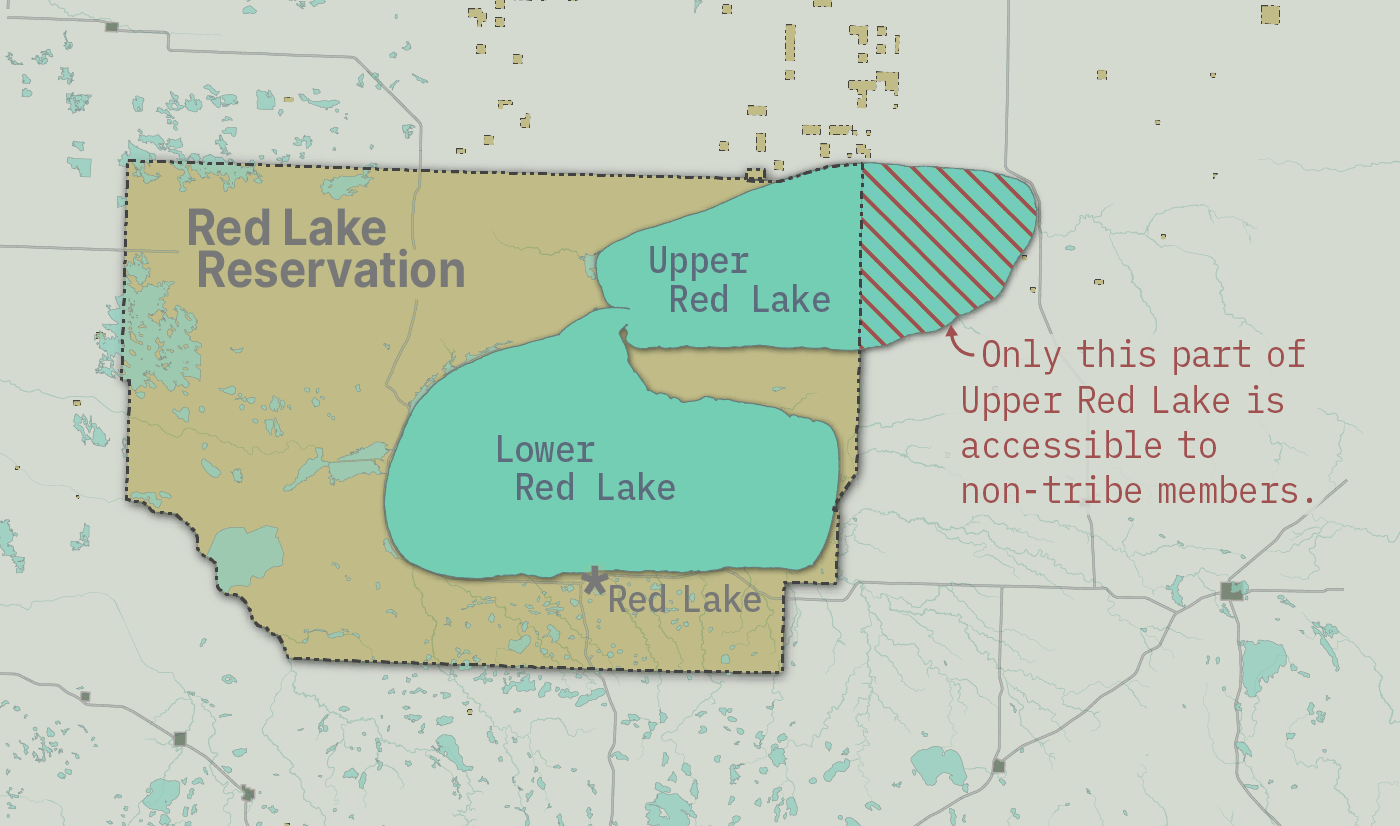Red Lake Nation and Minnesota DNR disagree on how to combat zebra mussels

Go Deeper.
Create an account or log in to save stories.
Like this?
Thanks for liking this story! We have added it to a list of your favorite stories.
Red Lake Nation leaders and state officials with the Minnesota Department of Natural Resources disagree on how to combat zebra mussels at Upper Red Lake.
Tensions between the two governments bubbled up Thursday morning at a quarterly meeting of the Minnesota Indian Affairs Council, a group made up of the state’s tribal leaders, as Commissioner of Natural Resources Sarah Strommen fielded questions from a Red Lake official.

Red Lake Secretary Sam Strong questioned Strommen for several minutes about the state’s approach to combatting aquatic invasive species. Strommen explained the state’s response to the presence of zebra mussel veligers — or larvae — in Upper Red Lake is the most aggressive response of any place around the state.
The back-and-forth went on for several minutes as Strong suggested the tribe would offer the state help to inspect additional boats at two state-managed boat launches on Upper Red Lake. Strong said the tribe estimates that 15 percent of boats entering Upper Red Lake are inspected.
Turn Up Your Support
MPR News helps you turn down the noise and build shared understanding. Turn up your support for this public resource and keep trusted journalism accessible to all.
“From a scientific perspective, the current method of enforcement is going to stop invasive species from coming to Red Lake?” Strong asked.
“To be very clear, the approach that is used in Minnesota, and I think most places, is not to 100 percent stop invasive species, it is to slow the spread. Because even humans are not the only transport of invasive species,” Strommen said.
For decades, Red Lake Nation and the state of Minnesota have worked collaboratively to restore walleye populations in Upper and Lower Red Lake.
Until 2018, Upper Lake and Lower Red Lake remained the only large walleye lake in the state still free from zebra mussels. That year the DNR announced it had found zebra mussel veliger — the tiny larvae — in Upper Red Lake. The small mollusks are known to filter out algae from lake water, a vital walleye food source.
Since the discovery of zebra mussel veligers, Red Lake Nation, which shares a portion of Upper Red Lake with the state, has said the presence of zebra mussels poses a serious threat to the lake’s walleye population. The band operates a commercial fishery on Lower Red Lake and has said tribal citizens rely on the lake’s walleye to feed their families.
The back-and-forth between the tribe and the DNR Thursday morning comes after legislation was introduced this past spring that sought to return thousands of acres of state lands around Upper Red Lake to the tribe.

The land back legislation was tabled following concerns the tribe would deny access to the lake to non-tribal citizens. Red Lake Nation insisted that return of those lands would not affect access to the lake by area residents or recreational anglers.
Many residents who live near the northeastern part of Upper Red Lake strictly opposed any return of state land to the tribe by the state.
The tribe maintains that the land around Upper Red Lake was unlawfully taken after maps did not include the entirety of Upper Red Lake in the final treaty agreement with the United States.
Red Lake Nation attorney Joe Plumer said his office proposed a cooperative conservation agreement between the tribe and the state to Gov. Tim Walz during a July visit. State law allows for tribal and state agencies to enter into agreements.
The proposed conservation agreement characterized the DNR’s current plan for managing zebra mussels as “grossly ineffective.”
The proposed agreement would grant Red Lake tribal conservation officers authority over non-tribal members on state lands to enforce state conservation laws. The agreement would allow tribal conservation officers to inspect boats. The agreement also sets out a framework for tribal conservation officers to work with the Beltrami County Attorney’s Office in prosecuting violations.

In a statement to MPR News last week, Gail Nosek, DNR communications director, said the agency values its relationship with the 11 tribal nations in Minnesota but was not considering entering a conservation agreement with Red Lake to enforce state law.
“The draft was created without input from the Minnesota DNR and is inconsistent with how we collaborate with Tribal nations when it comes to preventing and managing aquatic invasive species (AIS) and enforcing state law,” the statement sent by email on Nov. 15 said.
The statement went on to say that the DNR did not agree with the tribe’s assessment of its efforts in preventing the spread of zebra mussels and other invasive species.
“While small amounts of veligers have been observed since 2019, analyses from Upper Red Lake in 2022 do not show an increase in veligers from the previous year. In 60 percent of those 2022 samples, no veligers were detected. No adult zebra mussels have been discovered in Upper or Lower Red Lake,” the statement said.
At the Minnesota Indian Affairs Council Meeting Thursday morning, Strong asked Strommen to consider allowing Red Lake to help inspect more boats at public launches.
“That goal of inspecting 100 percent of boats is going to require additional conversation because that is a significant shift in how the state of Minnesota offers access to people to use public waters,” Strommen said.



